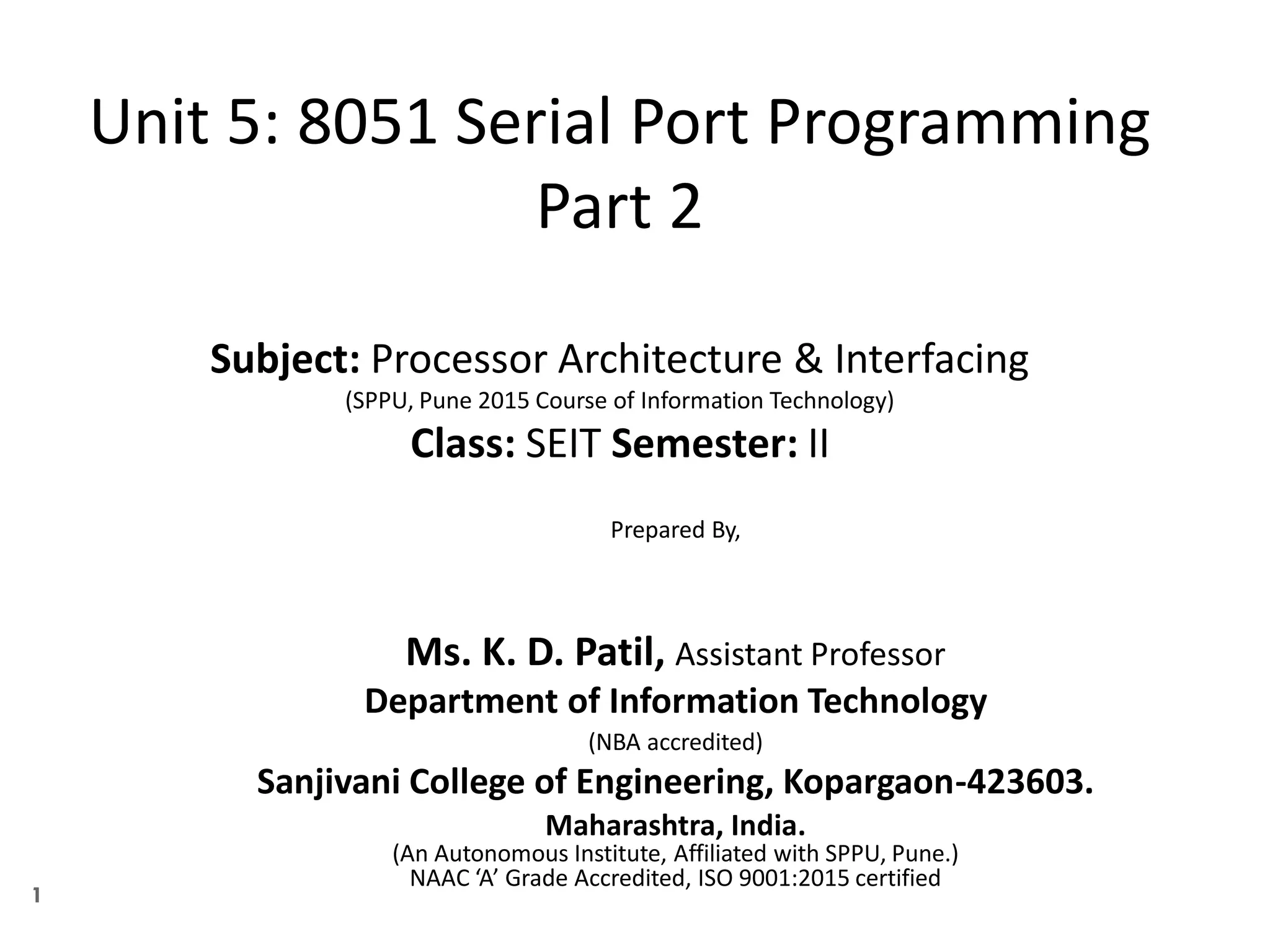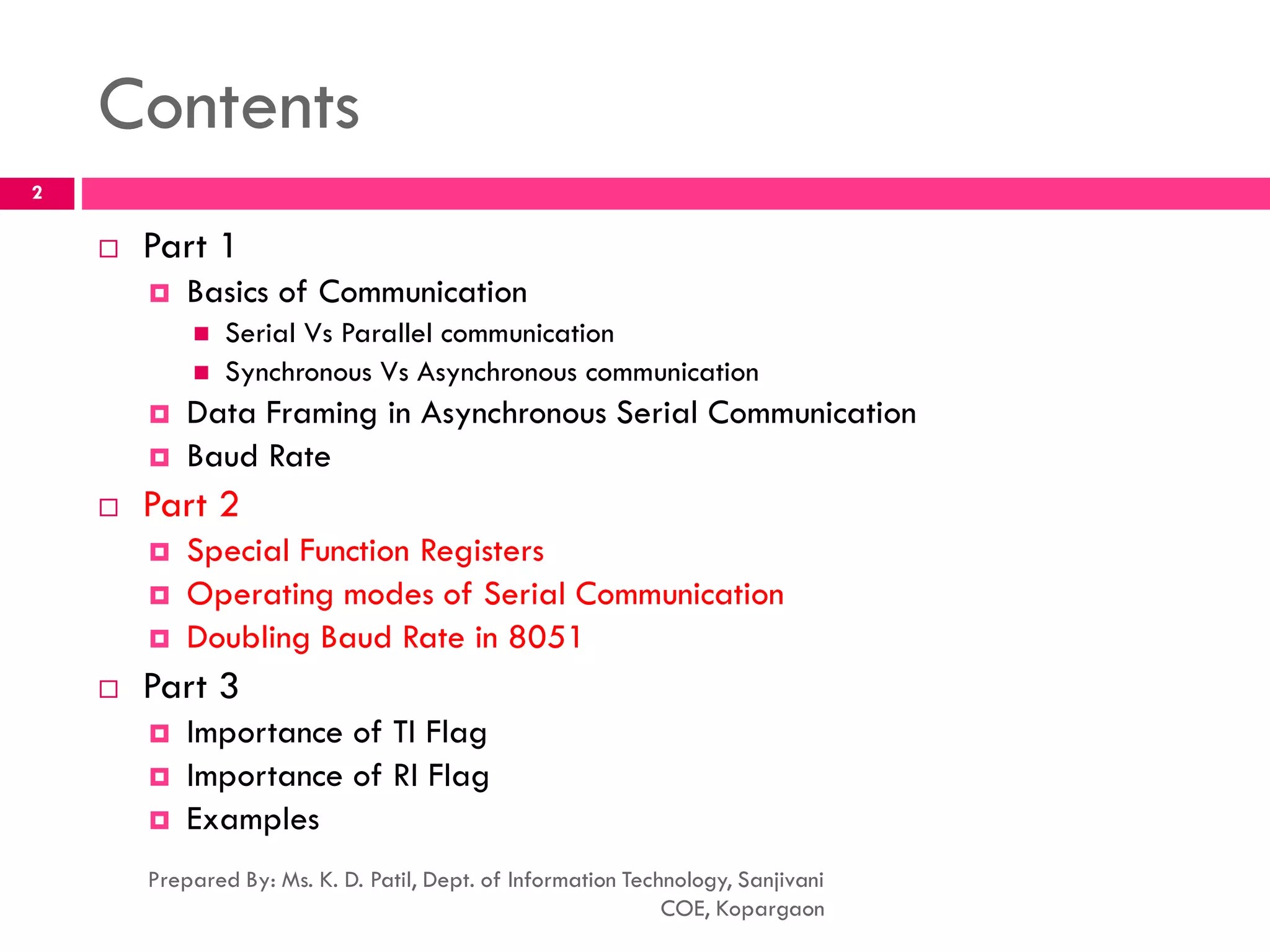This document provides an overview of 8051 serial port programming, discussing communication basics, special function registers, and operating modes. It focuses on the important registers like SBUF and SCON, detailing their functions in serial communication, including data framing and baud rate settings. The document also explains how to double the baud rate using the PCON register and presents baud rate comparisons for different SMOD settings.


















